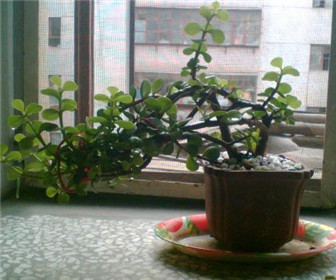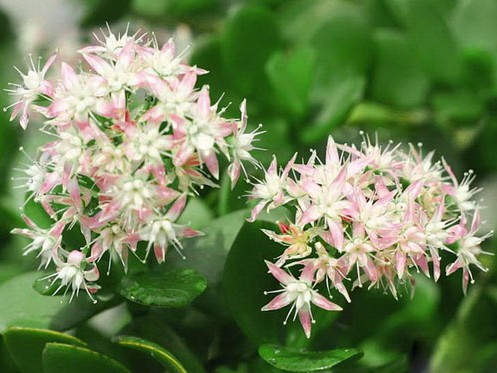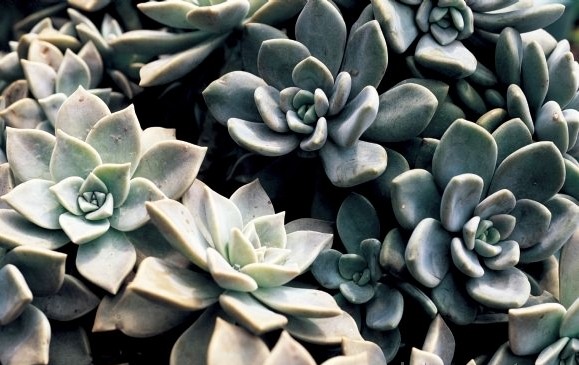The cultivation method of Yushu how to raise Yushu
Yushu has thick and rich green leaves, as smooth as Jasper, its branches vigorous and simple, like a big tree style, placed in the living room. The offices and halls are all distinguished. The atmosphere and the scene are beautiful. Yushu can not only release oxygen during the day, but also absorb indoor carbon dioxide at night, which is incomparable to most indoor flowers. Therefore, the small potted Yushu is very suitable for maintenance in the bedroom. Many friends do not know how to raise Yushu, do not know the breeding method of Yushu, the following editor will give you a brief introduction.
Brief introduction of Yushu

Yushu flower, alias swallow palm. Sedum paniculata. A glass tree. Eight treasures. Look at the green. Holly. Fleshy evergreen, Latin name: Jade plant, crassulaceae green lock dragon genus, also known as swallow palm. Sedum paniculata. A glass tree. Eight treasures. Look at the green. Holly. Fleshy evergreen, fat baby. Warm, dry and sunny environment. Not resistant to cold, afraid of strong light, slightly resistant to shade. The soil is fertile. Sandy loam with good drainage is better. The winter temperature is not lower than 7 ℃. Yushu flower is native to southern Africa and can be used as an ornamental plant for family use.
Culture methods of Yushu

Yushu flower crown tall and straight beautiful, green stems and leaves, terminal white flowers, very elegant and chic. If it is matched with a basin rack. The gravel is processed into a small bonsai and the decoration is more beautiful.
Yushu flowers like a warm, dry and sunny environment. Not resistant to cold, afraid of strong light, slightly resistant to shade. The soil is fertile. Sandy loam with good drainage is better. The winter temperature is not lower than 7 ℃.
Yushu is often propagated by cuttings. In the growing season, the thick and full top branches were cut, 8-10 cm long, dried slightly, inserted into the sand bed, and rooting for about 3 weeks. It can also be inserted with a single leaf. Then insert the sand bed, take root about 4 weeks after insertion, and put on the basin when the root is 2-3 cm long.
The basin needs to be changed and fertile soil is added every spring. Swallow palm grows faster, in order to keep the plant shape plump, fat and water should not be too much. During the growing period, it was watered 2-3 times a week, and watering was strictly controlled from July to August when it was hot and humid. Midsummer, such as poor ventilation or excessive lack of water, will also cause leaves to turn yellow and fall off, which should be maintained in a semi-shady place. Watering decreases gradually after the beginning of autumn. Outdoor cultivation, to avoid torrential rain, otherwise too much water in the roots, it is easy to cause rotten root death. When changing pots or putting rooms in autumn every year, attention should be paid to shaping and pruning to make the plant shape more simple and elegant.
The main diseases of Yushu flower are charcoal suitable disease and leaf spot disease, which can be sprayed with 1000 times of methyl topiramate wettable powder. The indoor ventilation is poor, and the stems and leaves are vulnerable to shell insects. They are sprayed with 1000 times of omethoate emulsion.
Matters needing attention in Yushu Culture

(1) Yushu basin soil requires good drainage, but it should not be too easy, otherwise it is easy to lodge when you grow up. Avoid outdoor rain and stagnant water in the plum rain season, and during the half-dormant period from July to August, watering should also be strictly controlled, otherwise the roots are easy to rot. It should be dry rather than damp in winter, and the basin soil should be slightly moist.
(2) the branches and leaves of Yushu contain a lot of Euphorbia officinalis, and the sap from the branches and leaves will cause the skin to turn red. It swells. pain。 Blistering can lead to blindness if it is accidentally splashed in the eye.
(3) proper shading can be used to prevent summer heat and cool down in summer, and light should be fully seen in other seasons. Basin soil should be dry rather than wet, pay attention to rain protection, basin soil should be relatively dry in winter, pay attention to ventilation to prevent defoliation.
(4) move indoors in the middle of October and place a warm place with sufficient light. The minimum overwintering temperature should not be less than 5 degrees Celsius. Watering should be strictly controlled to keep the basin soil from getting dry. Turn the basin every half month to avoid the deviation of branches and leaves, affecting the appearance, such as lack of light, we should pay more attention to prevent damp and hot rotten roots and defoliation.
(5) Yushu prefers loose sandy culture soil, avoid planting seedlings when the soil is too wet, transplant when the temperature is high, the pot time should be early summer, after resuming seedlings, should not pour too much water, should not be placed in the shade.
Control of Diseases and insect pests in Yushu Culture

1. Yushu leaf spot
Symptoms: the disease occurs on the leaves of Yushu. It is easy to occur in high humidity weather. The plaque is brown at first, the periphery is water-immersed and faded green, and expands in the shape of a wheel, round to oval, and the edge is brown and gray-white. In the later stage, black-brown mildew spots appeared in the center of the lesion, and turned into a dark-brown mildew layer under wet conditions.
Prevention and treatment methods: timely removal of diseased and residual leaves; 0.5%-1% Bordeaux solution (or 50% carbendazim 1000 times) can be sprayed in the early or later stages of the disease.
two。 Anthracnose of Yushu
Symptoms: the disease also occurs on the leaves of Yushu and can spread to the petiole in severe cases. In the initial stage, the plaque showed a flooded small macula, and after expansion, it was oval to irregular brown or yellowish brown, slightly rimmed, and in the later stage, the plaque became dry and produced small black spots arranged in wheel patterns. The main cause of this disease is poor ventilation.

Prevention and treatment: strengthen maintenance. Increase the application of phosphorus. Potash fertilizer; at the initial stage of the disease, 0.3% 0.5% Bordeaux solution (or 60% Dysen zinc 800 times 900 times, or 70% topiramate 1500 times) can be sprayed.
3. Brown soft scale
Symptoms: when soft scale harms plants, it generally clusters on the leaves or tender leaves, sucking plant sap and excreting mucus at the same time. Its excretion can easily cause a large number of coal fouling bacteria to multiply, make stems and leaves black, affect plant photosynthesis, and cause weak growth potential. Leaves withered and yellow, hindering viewing. When the occurrence is serious, the branches and stems are covered with insect bodies, resulting in the withering and yellowing of the plant and affecting the growth.
Control methods: if there are few damaged plants, or the number of insects is not much, generally use bamboo and other things to scrape off the insect body.
In severe cases, it can spread to the petiole. In the initial stage, the plaque showed a flooded small macula, and after expansion, it was oval to irregular brown or yellowish brown, slightly rimmed, and in the later stage, the plaque became dry and produced small black spots arranged in wheel patterns. The main cause of this disease is poor ventilation.

Prevention and treatment: strengthen maintenance. Increase the application of phosphorus. Potash fertilizer; at the initial stage of the disease, 0.3% 0.5% Bordeaux solution (or 60% Dysen zinc 800 times 900 times, or 70% topiramate 1500 times) can be sprayed.
3. Brown soft scale
Symptoms: when soft scale harms plants, it generally clusters on the leaves or tender leaves, sucking plant sap and excreting mucus at the same time. Its excretion can easily cause a large number of coal fouling bacteria to multiply, make stems and leaves black, affect plant photosynthesis, and cause weak growth potential. Leaves withered and yellow, hindering viewing. When the occurrence is serious, the branches and stems are covered with insect bodies, resulting in the withering and yellowing of the plant and affecting the growth.
Control methods: if there are few damaged plants, or the number of insects is not much, generally use bamboo and other things to scrape off the insect body.
Related
- Wuhan Hospital Iron Tree Blooming Result Was Instantly Frightened by the Gardener Master
- Which variety of camellia is the most fragrant and best? Which one do you like best?
- What is the small blue coat, the breeding methods and matters needing attention of the succulent plant
- Dormancy time and maintenance management of succulent plants during dormancy
- Minas succulent how to raise, Minas succulent plant pictures
- What are the varieties of winter succulent plants
- How to raise succulent plants in twelve rolls? let's take a look at some experience of breeding twelve rolls.
- Attention should be paid to water control for succulent plants during dormant period (winter and summer)
- Watering experience of twelve rolls of succulent plants
- Techniques for fertilizing succulent plants. An article will let you know how to fertilize succulent plants.



